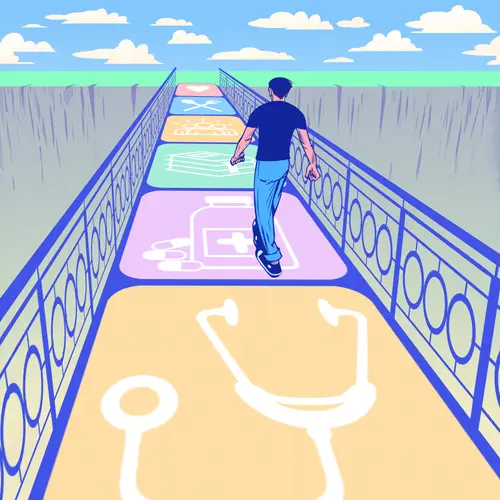Acute coronary syndrome (ACS) is an umbrella term for a range of conditions that cause reduced blood flow to your heart. Acute coronary syndrome symptoms may vary, but the underlying cause is a blockage in the arteries that bring blood to the heart.
One of the conditions under the ACS umbrella is myocardial infarction, or a heart attack. This happens when heart tissue becomes damaged because of cell death. Even if there is no cell death, when the blood flow to your heart becomes reduced it changes the way your heart functions.
How Does Acute Coronary Syndrome Happen?
Acute coronary syndrome often happens when there is a buildup of plaque, which are fatty deposits, on and inside the coronary arteries. The coronary arteries are the blood vessels that bring oxygen to your heart muscles.
ACS is caused when there is a sudden plaque rupture inside the coronary artery. When this happens, a blood clot is formed which blocks the blood to the heart muscles.
Each type of acute coronary syndrome varies in the amount of time that the blood flow is blocked, where the blockage is located, and how much damage happens as a result. Regardless of the type of syndrome, all of these conditions require immediate medical help.
What Are the Types of Acute Coronary Syndrome?
There are three types of acute coronary syndromes:
- ST segment elevation myocardial infarction or heart attack (STEMI)
- Non-ST segment elevation myocardial infarction or heart attack (NSTEMI)
- Unstable angina
The differences between these three syndromes are:
- A STEMI happens when the blood supply is blocked suddenly and for a long time. This creates changes to chemical markers in your blood levels. It can be seen on an electrocardiogram (ECG) because a large area of your heart is affected.
- With an NSTEMI you might not see changes on an ECG, but chemical markers in your blood will show that the heart muscle has been damaged. The amount of damage with an NSTEMI can be small compared to a STEMI. This is because the blood supply is not fully blocked, or is only blocked for a limited amount of time.
- Unstable angina occurs when stable angina changes for the worse. An example is when angina happens more often, lasts longer, and starts to feel worse. When angina becomes unstable it is a medical emergency.
Some common medical issues that can happen after a heart attack are called a stunned myocardium and a hibernating myocardium.
A stunned myocardium is when your heart muscle does not pump at its regular pace after a heart attack. This is also called a “stunned” heart muscle and happens after there has been a lack of blood to the heart muscle, even though the blood flow has since returned to the muscle area.
A hibernating myocardium happens when the heart muscle no longer functions well because there was an extended period of time where the blood supply was restricted. While it is possible for some parts of the heart muscle to begin functioning normally again by undergoing a procedure or medication, some areas will suffer long-term damage.
What Are the Symptoms of Acute Coronary Syndrome?
Acute coronary syndrome is often very painful. You may experience a lot of pain in your chest area. The following symptoms tend to begin suddenly:
- Dizziness, lightheadedness, or fainting
- Restlessness or feeling apprehensive
- Indigestion
- Vomiting or nausea
- Excessive sweating
- Pain beginning from the chest and spreading to your neck, jaw, shoulders, arms, or upper abdomen
- Feeling fatigued
- Chest pain that can have sensations of pressure, burning, aching, or tightness
- Shortness of breath
These symptoms may change depending on your sex, age, and any medical conditions you have.
Acute coronary syndrome is a medical emergency. If you experience any of the above symptoms it is important that you seek emergency medical help.
What Are the Risks Factors for Acute Coronary Syndrome?
Risk factors for developing acute coronary syndrome include:
- Cigarette smoking
- Diabetes
- Unhealthy diet
- High blood pressure
- Aging
- High blood cholesterol
- Obesity
- Family history of heart disease or stroke
- History or high blood pressure, diabetes, or preeclampsia throughout pregnancy
- Covid-19 infection

